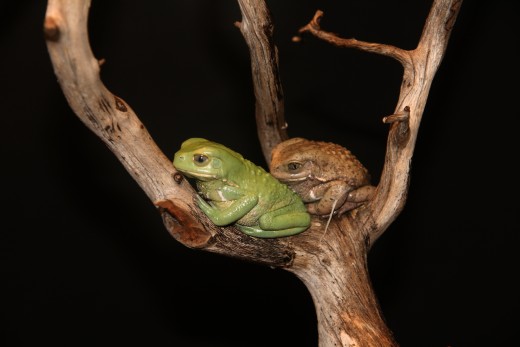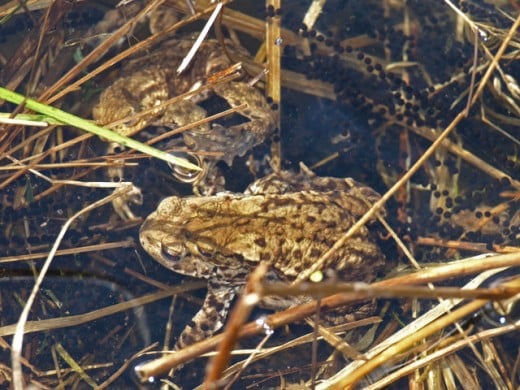What Are the Differences Between Frogs and Toads?
Frogs and toads, toads and frogs -- is there really any difference between the two? And when someone says it's raining toads, does that really happen?
To put amphibian jargon into easier to understand human terms, frogs and toads belong to the same family, but they are cousins, not twins. Both frogs and toads belong to the anura order; frogs belong to the Ranidae or Hylidae family, toads to the Bufonidae.
But since these creatures aren't up to introductions when you meet them, so it will be easier to explain the basic differences in appearance and habits to help you know which one is which.


Physical Characteristics and Habits
Frogs: Smooth, moist skin; green or brown in color with dark markings; pointed heads; back legs are longer than front legs. Frogs live in ponds and streams. Their need to keep their skin moist means they don't stray far from water. Some frogs have teeth. The back feet on a frog are webbed.
Frogs hunt both day and night and generally live alone. They are carnivorous, eating fish, insects, small mammals and other amphibians. Their natural enemies are birds and snakes, and those humans who hunt them for their legs.
Toads: Light brown with darker markings; skin is dry and bumpy; rounded heads; their back legs are not as long as those of the frog. Toads live on land. Toads have no teeth. Toad's back feet have little to no webbing.
Toads are nocturnal, live alone and are carnivorous. They eat insects, frogs, slugs, newts, spiders. Like the frog, their natural enemies are birds and snakes, but the toad secretes poison in its skin so enemies must hunt them cautiously. Those bumps on the skin? That's the toad's secret; the bumps are the glands that secrete the toxins to foil the toad's natural enemies.
During hibernation and mating, toads may live with other toads.
Frog and Toad Facts
Toads are notorious for urinating when you pick them up; this is something Mother Nature built into their survival mechanism. Losing the urine makes the toad lighter, enabling it to get further away from its captor. Another defense mechanism some toads have is the ability to fill their bodies with air. This makes them look larger to predators, in the hopes of discouraging attack.
Frogs and toads may enter a period of dormancy in hot, dry weather, termed estivation. The period of dormancy due to cold temperatures is termed hibernation.
Mating season occurs when the frogs and toads leave hibernation. Both lay their eggs in water. The frog's eggs look like a cluster of grapes; the toad's eggs look like a string of pearls. Frogs will lay their eggs in the ponds and streams where they live; the toads may lay their eggs in small pools of standing ground water.
The young of both the frog and toad emerge from the eggs as tadpoles before they mature. The toad's tadpole growth cycle is shorter than the frog's, probably Nature's adaptation for the likely brevity of the water supply.
About that Raining Toads Saying...
Especially during the mating season, when there is a good rainfall you will indeed see toads hopping about. It's true they're not coming from the sky, but when you see the sheer numbers of them -- at least in rural areas -- you'll be tempted to believe the saying.









